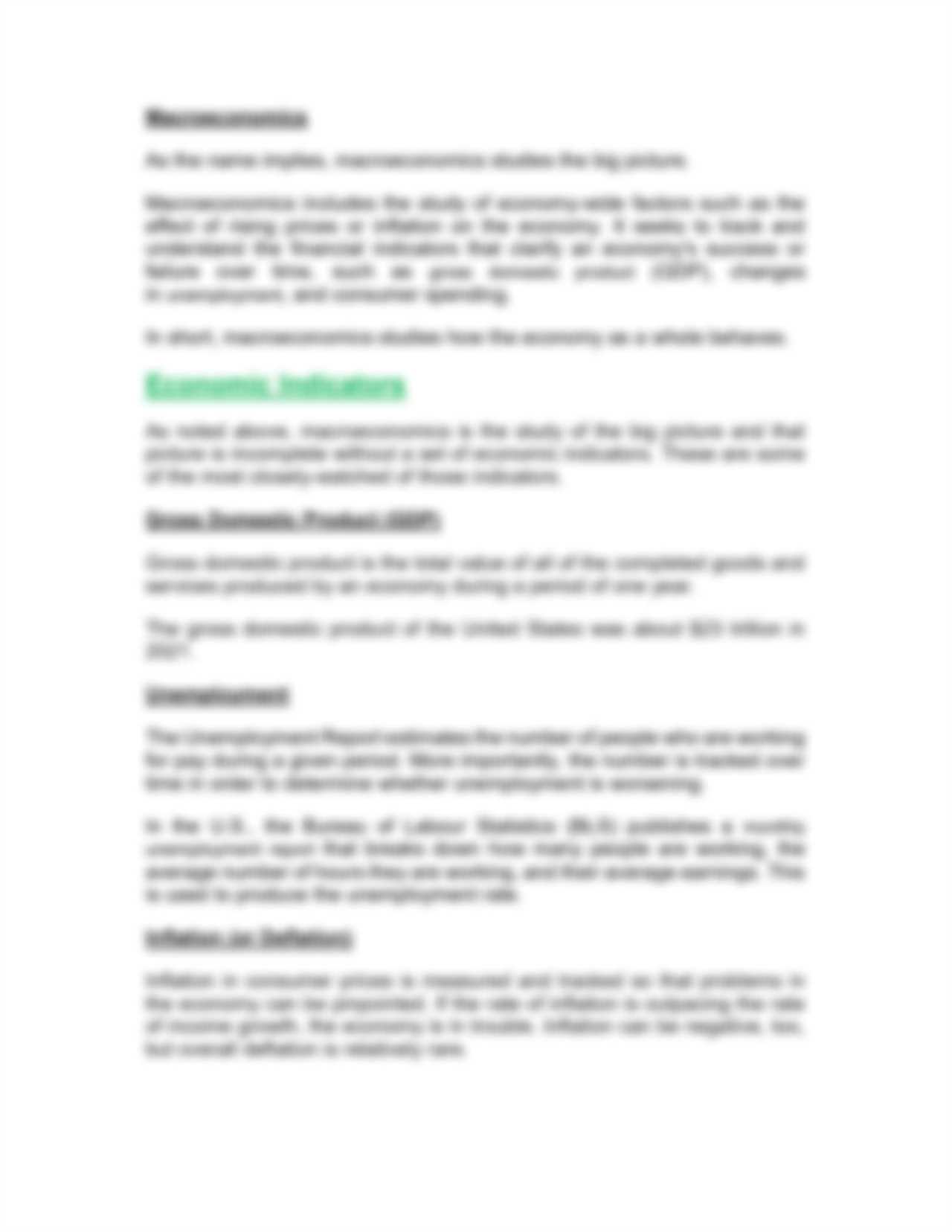Types of Economies
In the world of economics, there are several types of economies that exist. These economies can be categorized based on their level of government involvement and the degree of economic freedom they provide to individuals and businesses. Here are some of the main types of economies:
1. Market Economy
2. Command Economy

3. Mixed Economy
4. Traditional Economy
Economic Indicators
Economic indicators are statistical data that provide insights into the overall health and performance of an economy. These indicators are used by economists, policymakers, and investors to assess the current state of the economy and make informed decisions.
There are various types of economic indicators that measure different aspects of the economy. Some of the most commonly used economic indicators include:
- Gross Domestic Product (GDP): GDP is the total value of all goods and services produced within a country’s borders in a specific period. It is considered one of the most important indicators of economic growth and is often used to compare the performance of different countries.
- Unemployment Rate: The unemployment rate measures the percentage of the labor force that is unemployed and actively seeking employment. It is an important indicator of the health of the labor market and the overall economy.
- Inflation Rate: The inflation rate measures the rate at which the general level of prices for goods and services is rising and, consequently, the purchasing power of currency is falling. It is an important indicator of the stability of prices and the overall health of the economy.
- Consumer Price Index (CPI): The CPI measures changes in the price level of a basket of consumer goods and services over time. It is widely used as a measure of inflation and is used to adjust wages, pensions, and other payments for inflation.
- Interest Rates: Interest rates are the cost of borrowing money or the return on investment. They are set by central banks and have a significant impact on borrowing costs, investment decisions, and overall economic activity.
These are just a few examples of the many economic indicators that exist. Each indicator provides valuable information about different aspects of the economy and can help analysts and policymakers understand trends, make predictions, and formulate appropriate policies.
The Role of Government in the Economy
Government plays a crucial role in the economy of any country. It is responsible for creating and implementing policies that affect various aspects of economic activity. The role of government in the economy can be summarized into three main functions: regulation, stabilization, and redistribution.
Regulation
One of the primary roles of government in the economy is to regulate economic activity. This involves creating and enforcing laws and regulations that govern businesses and industries. Government regulations aim to ensure fair competition, protect consumers, and promote public safety. For example, governments may set minimum wage laws, establish environmental regulations, and enforce antitrust laws to prevent monopolies.
Stabilization
Another important role of government in the economy is to stabilize it during times of economic instability. Governments use various tools and policies to manage economic fluctuations such as recessions and inflation. They may implement monetary policies, such as adjusting interest rates, to control the money supply and influence borrowing and spending. Additionally, fiscal policies, such as taxation and government spending, can be used to stimulate or slow down economic growth.
Redistribution
The government also plays a role in redistributing wealth and income within society. Through taxation and social welfare programs, governments can collect funds from individuals and businesses and redistribute them to those in need. This helps to reduce income inequality and ensure a basic level of social welfare for all citizens. Redistribution policies can include progressive tax systems, welfare programs, and public education and healthcare.

Emily Bibb simplifies finance through bestselling books and articles, bridging complex concepts for everyday understanding. Engaging audiences via social media, she shares insights for financial success. Active in seminars and philanthropy, Bibb aims to create a more financially informed society, driven by her passion for empowering others.
